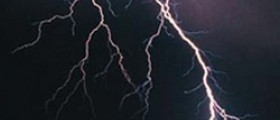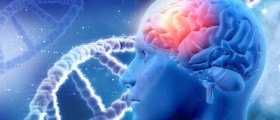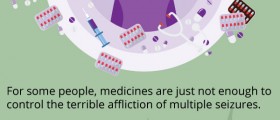
Myoclonic seizures represent one type of generalized seizures, the one affecting the entire body. Such seizures are typical for all patients suffering from myoclonic epilepsy but are also reported in case of certain metabolic and/or toxic disorders. Hypoxic as well as ischemic injuries may trigger myoclonic seizures as well.
More about Myoclonic Epilepsy
Myoclonic epilepsy is characterized by focal or generalized, rapid and uncontrolled muscle movements. These movements are in the majority of cases synchronous. There is impairment of consciousness, which sometimes does not occur.
Myoclonic seizures are generally brief and they tend not to last longer than 1-2 seconds. Still, it is possible to experience many myoclonic seizures within short period of time.
Myoclonic Seizures and Epilepsy Syndromes
These seizures affect both sides of the body. They are a part of several epileptic syndromes including juvenile myoclonic epilepsy, Lennox-Gastaut syndrome and progressive myoclonic epilepsy.
Juvenile myoclonic epilepsy is characterized by seizures affecting the neck, shoulders and upper arms. The epileptic attack typically occurs after waking up. This type of epilepsy begins in puberty and sometime early adulthood. Myoclonic epilepsy responds well to prescribed medications and can be successfully controlled. However, medicamentous treatment must continue throughout patient's life.
Lennox-Gastaut syndrome is not so usual condition that includes myoclonic seizures but may be as well characterized by other types of seizures. The syndrome is reported to begin in early childhood with myoclonic seizures affecting the neck, shoulder, upper arms and in some cases the face. Such seizures are rather severe and may be hard to control even with potent antiepileptic medications.
Progressive myoclonic epilepsy includes the combination of myoclonic seizures and tonic-clonic seizures. Unfortunately, this type of epilepsy has no good prognosis, because response to the treatment is insufficient and patients usually deteriorate over time.
Postanoxic Myoclonus
As it has already been mentioned, myoclonic seizures may also affect people who have experienced hypoxic or ischemic injury. The damage caused by these injuries is blamed for focal, multifocal or generalized periodic myoclonic movements. The affected individuals most commonly perform certain activities repeatedly such as eye blinking, chewing movements and multifocal twitching.
If one has had a global ischemic event, the chances of recovery are poor and he/she ends up with a variety of neurological sequelae.
This type of myoclonic seizures is very difficult to treat and practically impossible to be brought under control. Seizures may easily become continuous and progress into status epilepticus. The condition is treated with benzodiazepines and some other antiepileptic medications, without much success.

















Your thoughts on this
Loading...